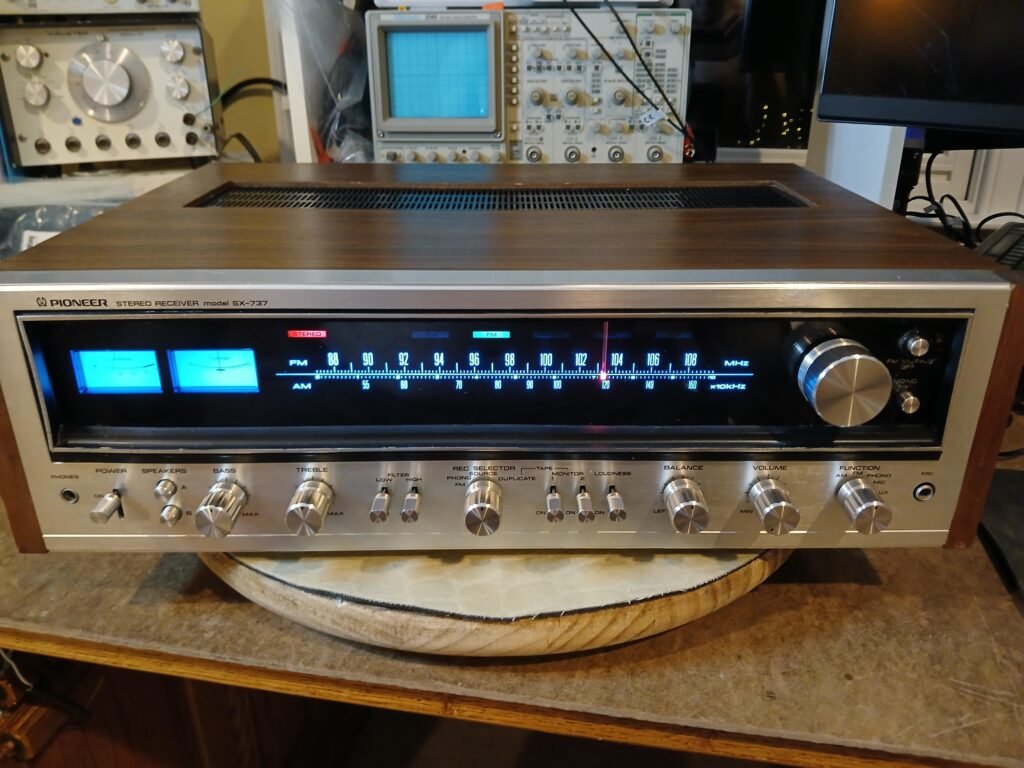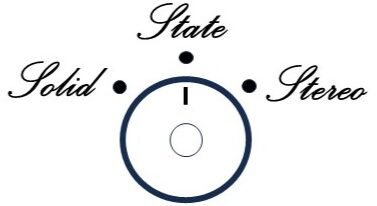Pioneer SX737
$450

Examples of interior restoration results (click on photos to expand)
Exterior photos
Blemishes
Restoration notes
Beyond the list of standard restoration steps detailed on the main page, here are some added notes for this unit :
Opinions vary (of course), but I personally prefer the x3x generation over all other Pioneer receiver generations. First series without speaker plugs, has dedicated power switch, very solidly built, looks and sounds amazing (IMHO). The SX737 is seen by many as the “sweet spot” of the x3x series as it delivers reasonable power while retaining a tonal quality that some say is missing in the SX838, SX939 and SX1010.
I picked up this SX737 from a local collector who never had a chance to fully test it. The price reflected this plus cosmetic issues including a broken dial glass and scratched up knobs.
It powered up fine. Setting DC bias and idle currents complicated only by a common Pioneer service manual issue (swapping which variable resistors do what in instructions). Schematics to the rescue…
After thorough switch/pot cleaning, it was highly functional though the left channel was fading out – especially when cycling power. Also noted an unusual pop when powered down. Replacing the protection relay resolved both issues (old contacts shot). Also added snubber diode to protect new relay driver.
The FM tuning meter was dead. This turns out to be a common SX737 failure and a replacement meter was purchased/installed. Both meters now work fine.
Pioneer is known for using a high number of notoriously problematic transistors (“replace on sight”) that start failing after 30 or 40 years. For the SX737, it meant updating 22 small signal transistors with modern equivalents (leveraging expertise on AudioKarma). The large output transistors were good/original and the mica/thermal paste was recently replaced, so left that alone.
I ordered/installed a new dial glass (reproduction glass that looks and fits great plus is totally flawless) and found a nice set of replacement knobs. Some minor blemishes remain (please see Blemish photos plus light scratch on faceplate near high filter switch you can see on front photos), but overall appearance is quite good. The LED dial/meter lights look great. I tip them down to eliminate “hot spots” that occur when LEDs are pointed straight ahead.
Functional testing complete/passed. This is an excellent example of a fine sounding receiver.
Bench measurements
The SX737 amplifier spec is given in the service manual (all into 8 ohms, both channels driven @ 0.5% max harmonic distortion)
20 to 20,000 Hz : 35 watts per channel
1000 Hz : 40 watts per channel
My results came in exactly on spec.
Some reference links
hifiengine : https://www.hifiengine.com/manual_library/pioneer/sx-737.shtml
Classic Receivers : https://classicreceivers.com/pioneer-sx-737
